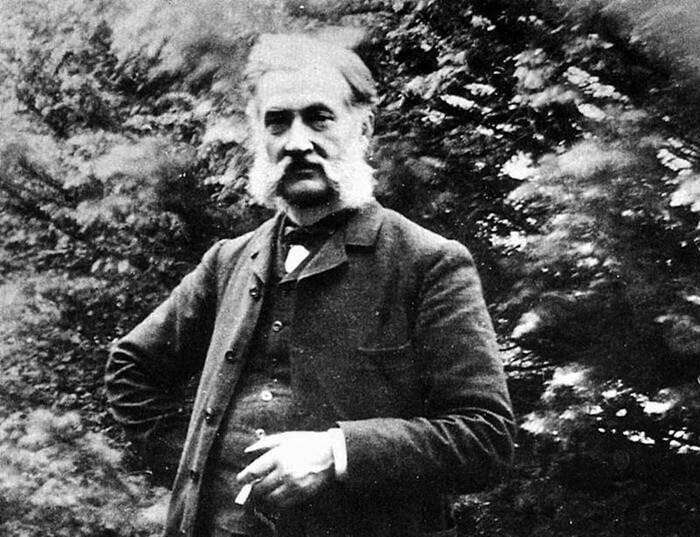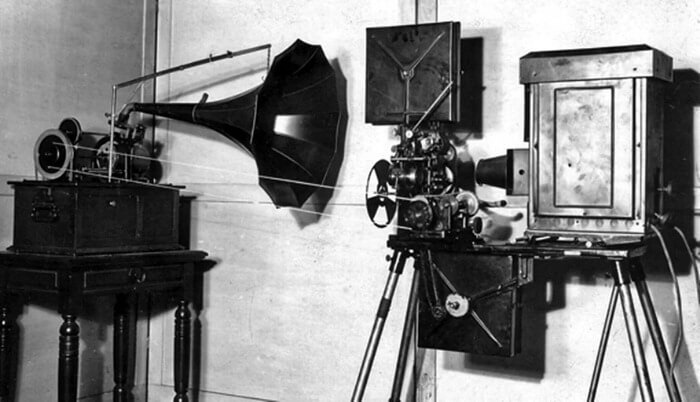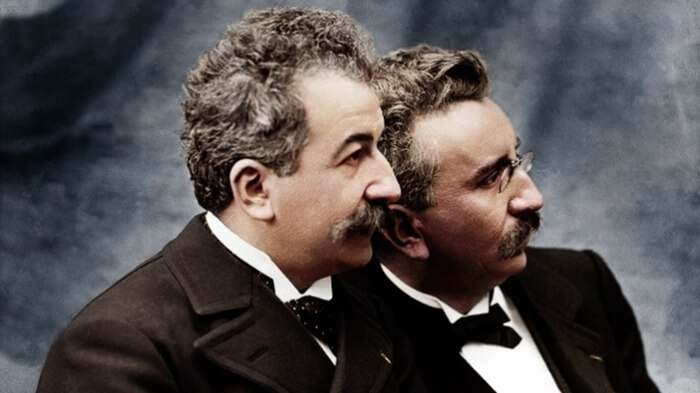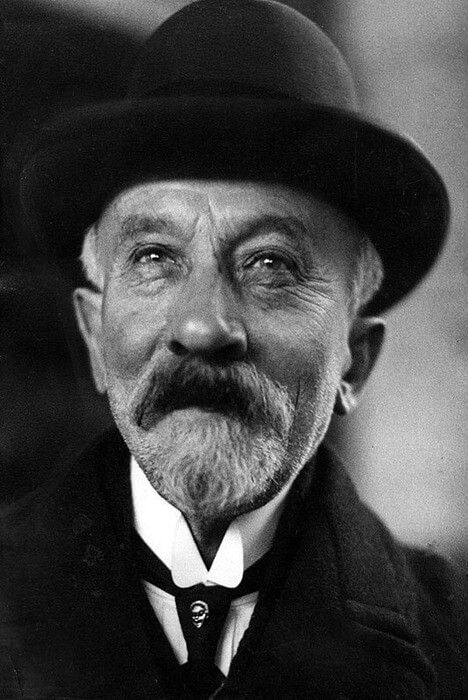We are used to cinemas, free access to many films and no longer want to watch it in below HD quality. We are already being offered not just to watch a movie, but attracted by various options for animating pictures - from 3D to 7D.
But it was not always so. And few people think about how it all began. Let's find out together the history of the formation of world cinema, from the first pictures to color films.
The very first film in the world - "Scenes in the Roundhay Garden"
It is generally accepted that cinema appeared in 1895. But you rarely find a mention of the fact that the very first film in the world was shot in 1888 - "Scenes in the Roundhay Garden" ("Roundhay Garden Scence").

The Frenchman Louis le Prince, the author of this motion picture, used a technology that was new for that time: the recording went on paper film with a photographic emulsion applied to it. The scene is only 1.66 seconds long, and on it Louis captured a walk in the garden of his son, mother-in-law with her husband and friend Harriet Hartley.
The official start of cinema was laid by the Lumière brothers and their most famous film "Arrival of the train at the La Ciotat station" ("L'Arrivée d'un train en gare de la Ciotat", 1895). In Russia it is also known under the names "Arrival of a Train" and "Arrival of a Mail Train".
The plot is quite simple - in 49 seconds, the train stops at the La Ciotat station and the passengers walking along the carriages are shown.
Interesting fact! This film was the progenitor of the silent film plot, which was called "wandering." It began to be reproduced by directors all over the world and filmed their versions at various train stations.
Why is this documentary short film remembered and become canon? For the first time, the creators of the picture were able to convey movement in space on a flat screen: a train appears from afar, passes through the entire screen, and people are walking nearby on different planes (general, medium and large).
With its realism, "Arrival of the Train" impressed the audience so much that they bounced off the screen, fearing that the car might crush them.
The first film with sound - "The Jazz Singer"
Sound recording technology (phonograph) already existed before the advent of cinema. In 1894, Thomas Edison and his assistant William Dixon made the first attempts to introduce sound recording into a movie camera. But the invention (kinetophonograph) remained only a technical incident due to the big problems in synchronization of devices and very low sound quality.

Leon Gaumont tried to repeat something similar in 1900: he combined the Lumiere apparatus with a phonograph. Yet the invention remained unsuitable for the birth of sound cinema for many years to come.
Technological progress required film directors to move forward: the popularity of radio had a bad effect on the flow of viewers to cinemas. Therefore, the introduction of audio accompaniment for films has become a necessity.
Finally, on October 6, 1927, the world's first sound film was released. Film strip "The Jazz Singer" was released by the well-known WARNER Bros. and is a sentimental comedy. The sound in this picture is not the usual conversations of the characters and the surrounding noise. Here, only the overlay of musical fragments of jazz is used and only a few phrases have been added (for example, "Come on, Mom, listen!").
Interesting fact! For the launch of sound cinematography, the theme of music was not chosen by chance.In January 1917, a gramophone record with a jazz composition was released in the United States for the first time in the world.
The tape was scored using the "Vitafon" technology - the sound was first recorded on gramophone records, which were then synchronized with the screen.
A year later, the next film came out "The Singing Fool" from the same creators, but it already contains full-fledged dialogues of the characters.
The first tape with the sound recorded on it came out in 1928 and was called "Perfect crime".
First color film - "Journey to the Moon"
The Lumière brothers made attempts to manually paint the films, but they themselves did not consider it a serious work, therefore, there are no mentions of specific paintings in history.

The UK Media Museum conducted much research and searches in the archives, resulting in the world's first ever color film, titled "Journey to the Moon", which dates back to 1901-1902.
It belonged to the French filmmaker Georges Méliès, who recorded the sending of the expedition to the moon. The color effect in "The Journey" he managed to achieve using three films with different colors, namely blue, red and green. By superimposing them on top of each other, Georges managed to get an image of different shades. Unfortunately, he did not have time to complete the idea.

Before the discovery of Melies' tape, Herbert Calamus was considered the founder of color cinema. In 1912 he founded the Technicolor company with its own technology for coloring films.
Painting of the picture was due to the special equipment of the shooting camera with a system of glass prisms, which divided the light flux from the lens into two. Filters transmitted the image in two colors to different films. Precisely because this process of applying color is quite laborious and complex, the company released the first film only in 1917.
In 1922, Technicolor showed on the screens the movie Victims of the Sea, which was a huge success with the audience, although it was colored with only four colors (green, red, black, white).
The first such cinema in the USSR - "Battleship Potemkin"... It was released on the screens on December 5, 1925, and all its "color" was in the painted over bright red Soviet flag.
Despite many earlier finds, the official year of the appearance of cinema in color is considered to be 1935. Then director Ruben Mamulyan released his film Becky Sharp, which is the adaptation of the book "Vanity Fair".
Today, films are a milestone in the history of cinema (as well as first cartoons). Vintage films are an artistic heritage, they carry great value and experience of generations. It should not be forgotten that progress in cinema became possible only after these first difficult discoveries.

